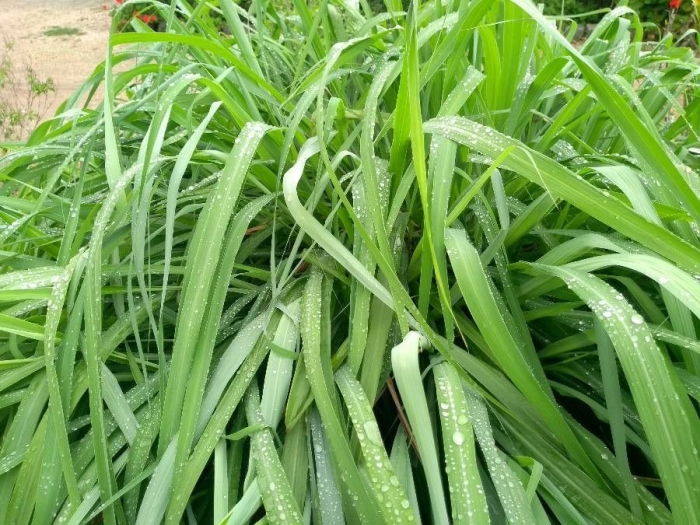Lemon Grass
(Cymbopogon citratus)
Lemon Grass (Cymbopogon citratus)
/
/

Pesquisador Pesquisador
CC BY-SA 4.0































Estimated Native Range
Summary
Lemongrass thrives in full sun and requires medium amounts of water, preferring well-drained soils. It is not frost-hardy and should be grown in containers in cooler climates to be brought indoors during winter. In warmer regions, it can be used as a fragrant ornamental grass in borders or as a privacy screen. Lemongrass can be propagated by division or from stem cuttings. It is generally pest-resistant but may be susceptible to rust, blight, and leaf spot diseases.CC BY-SA 4.0
Plant Description
- Plant Type: Grass
- Height: 2-4 feet
- Width: 2-3 feet
- Growth Rate: Rapid
- Flower Color: N/A
- Flowering Season: Summer
- Leaf Retention: Evergreen
Growth Requirements
- Sun: Full Sun
- Water: Medium
- Drainage: Slow, Medium, Fast
Common Uses
Border Plant, Deer Resistant, Drought Tolerant, Edible*Disclaimer: Easyscape's listed plant edibility is for informational use. Always verify the safety and proper identification of any plant before consumption., Fragrant, Groundcover, Low Maintenance, Potted Plant, Street Planting
Natural Habitat
Open woodlands and grasslands in the Indian Subcontinent and Maritime Southeast Asia
Other Names
Common Names: Lemongrass, West Indian Lemongrass, Lemongras, Westindisches Zitronengras, Zitronengras, Pasto Limón, Zacate Dete, Zacate Limón, Herbe Citron, Citronelle
Scientific Names: , Cymbopogon citratus, Andropogon citratus, Andropogon citriodorus, Andropogon nardus subsp. cerifer, Andropogon ceriferus, Andropogon cerifer, Andropogon fragrans, Andropogon nardus subsp. ceriferus, Andropogon nardus var. ceriferus
GBIF Accepted Name: Cymbopogon citratus (DC.) Stapf